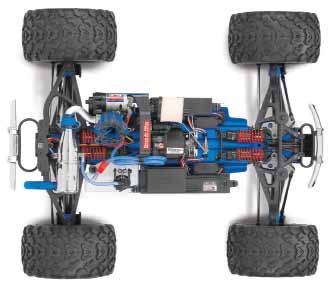Remember all the regulations. Various regulations related to safety and quality standards are laid down and enforced by the concerned government bodies of almost all countries—these regulations are especially tight in foreign nations.

“Before entering the market, products have to go through rigorous tests that check their quality and safety for consumers. In the case of toys there are many standards governing each component used, since it was found that in 2005, in the US 20 children under the age of fifteen died in accidents associated with toys, and an estimated 202,300 children under fifteen were treated in US hospitals’ emergency rooms for injuries associated with toys,” explains Vineet Sahu, member of RoboMSR, referring to data from the US Consumer Product Safety Commission’s National Electronic Injury Surveillance System.
Regulations govern mechanical and physical properties, electrical components, paints, flammability,etc. For example, all live electrical components must be securely enclosed; heating elements must be supported and prevented from making contacts that might produce shock hazards; products must not exceed maximum surface temperature requirements; proper heat sinks should be provided to drain the heat generated (this is a major research and develpoment challenge today), and so on.
There are even regulations that govern the psychological impact of a toy on a child. For example, the toy should not hurt the sentiments of special children and it should not foster terror.
Jayakrishnan warns, “Even though the age limit for every toy is prescribed, these toys will possibly be within the reach of children below the age group. Hence, great care should be taken while designing as well as selecting components.”
Watch and imbibe the latest technologies. Research and development (R&D) in fields like robotics, embedded systems, vision, sensors and semiconductors immediately trigger innovations in high-tech toys. “There is a huge demand for such toys and hence plenty of funds and offers are flowing in for R&D of robotic toys,” says Shekar. There is a lot of R&D concerning the development of more efficient heat sinks, making of smaller and varied motors, development of safer, nontoxic materials for the body/chassis, better methods for controlling the actuators, more user-friendly inter-faces, etc. “As the industry grows, R&D in artificial intelligence would also have a major impact on robotic toys,” says Shekar.
Jayakrishnan concludes, “The distinction between lower-end robots and high-tech toys is limited to only the price, the level of adaptability and flexibility in programming, and hardware. Hence, it is not a line but a band that exists due to the overlap of these two products. Yes, a few decades back children were satisfiedwith kites, blocks, dolls and other non-mechanical toys. But certainly, with the onset of digital technology, the advancements in animation, etc, they need more high-tech and life-like toys. So, the new trend of toys getting high-tech also helps in the smooth introduction of robotics to our children!”
The author is a technically-qualified freelance writer, editor and hands-on mom based in Singapore






